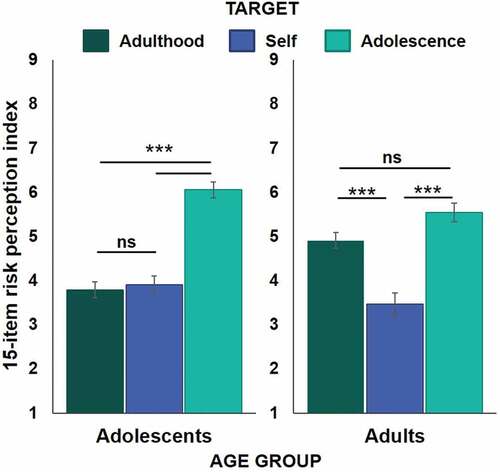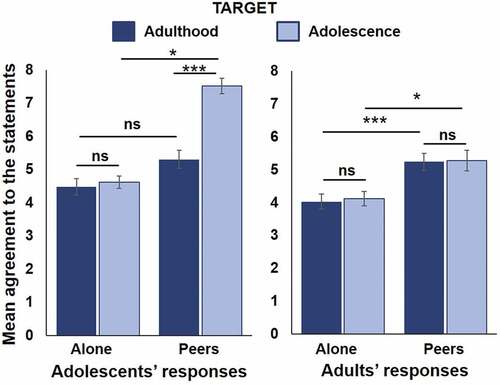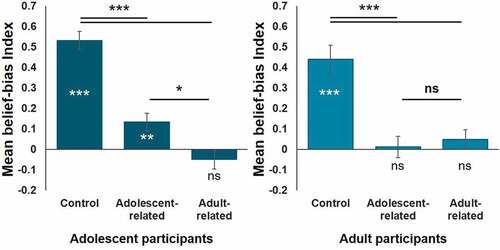Figures & data
Table 1. Examples of the syllogisms displayed to the participants in the present study according to their structure (no conflict and conflict) for each type of content (control, adolescent-related and adult-related content) translated in English.
Figure 1. Average risk perception scale.

Figure 2. Mean agreement with statements relating to risk-taking behaviours in the absence or presence of peers.

Figure 3. Mean belief bias index (and standard deviations) for each type of syllogism content (control, adolescence-related, and adulthood-related) and for each age group (adolescents and adults).

Supplemental Material
Download MS Word (28.5 KB)Data availability statement
The authors confirm that the data supporting the findings of this study are available within the article or its supplementary materials.
